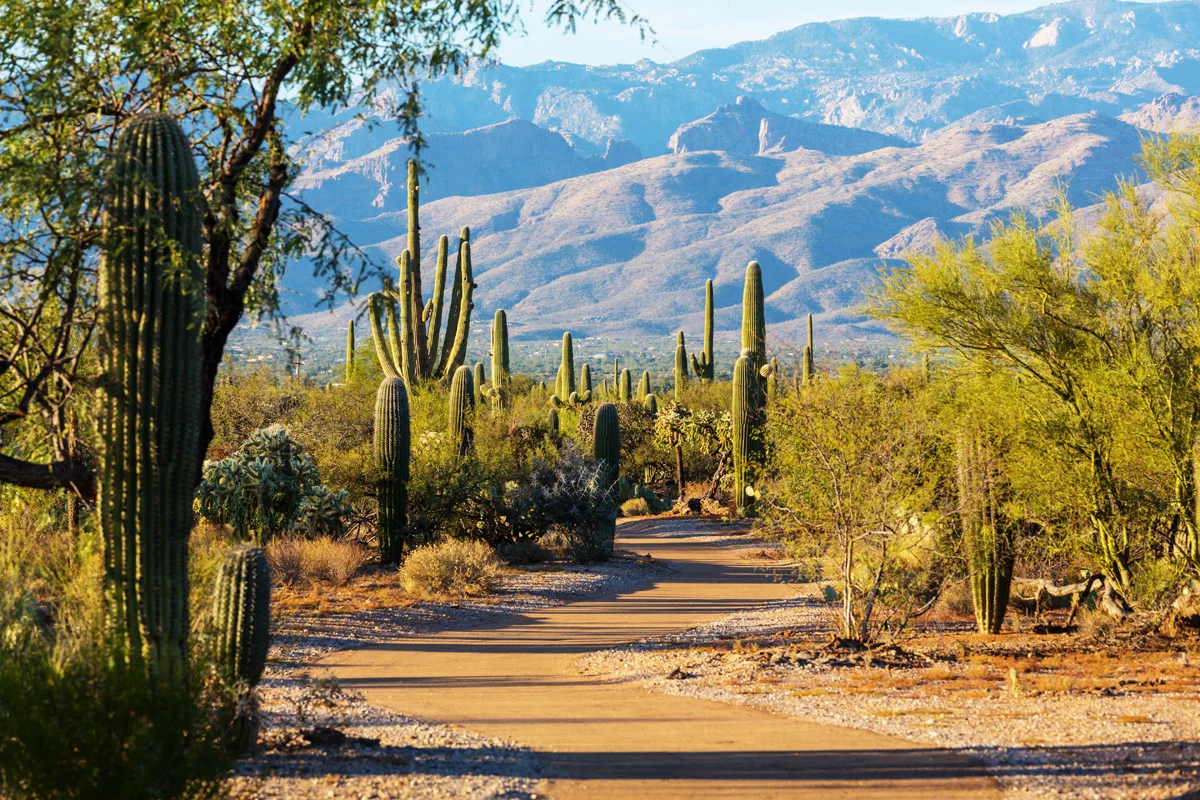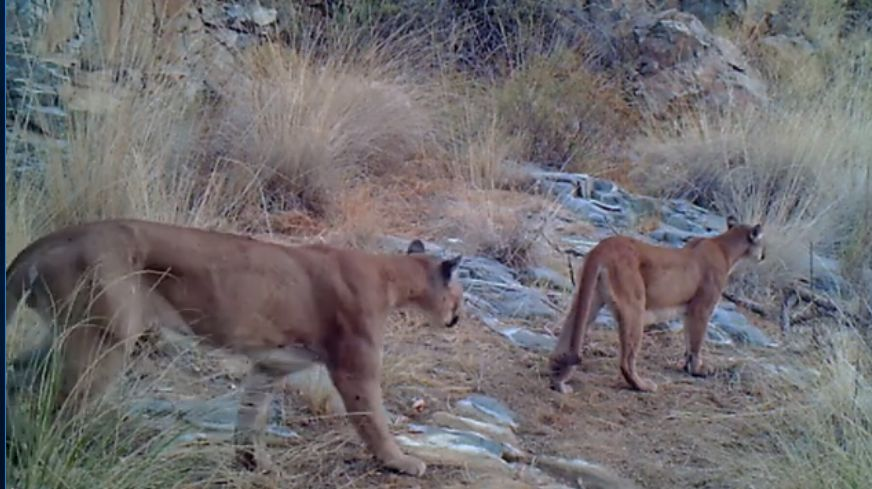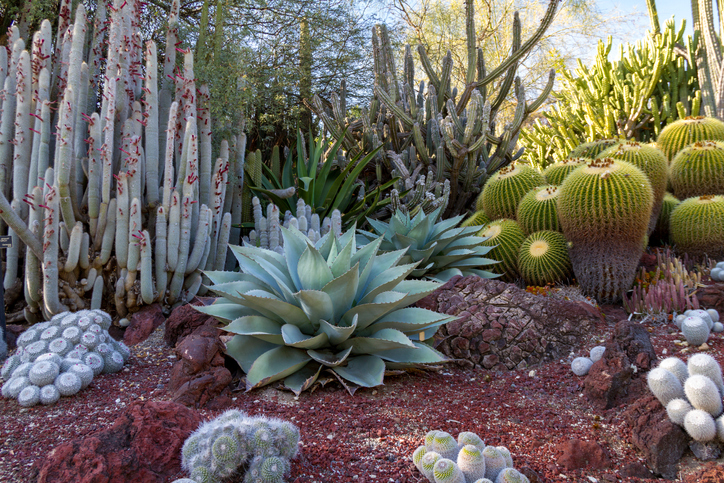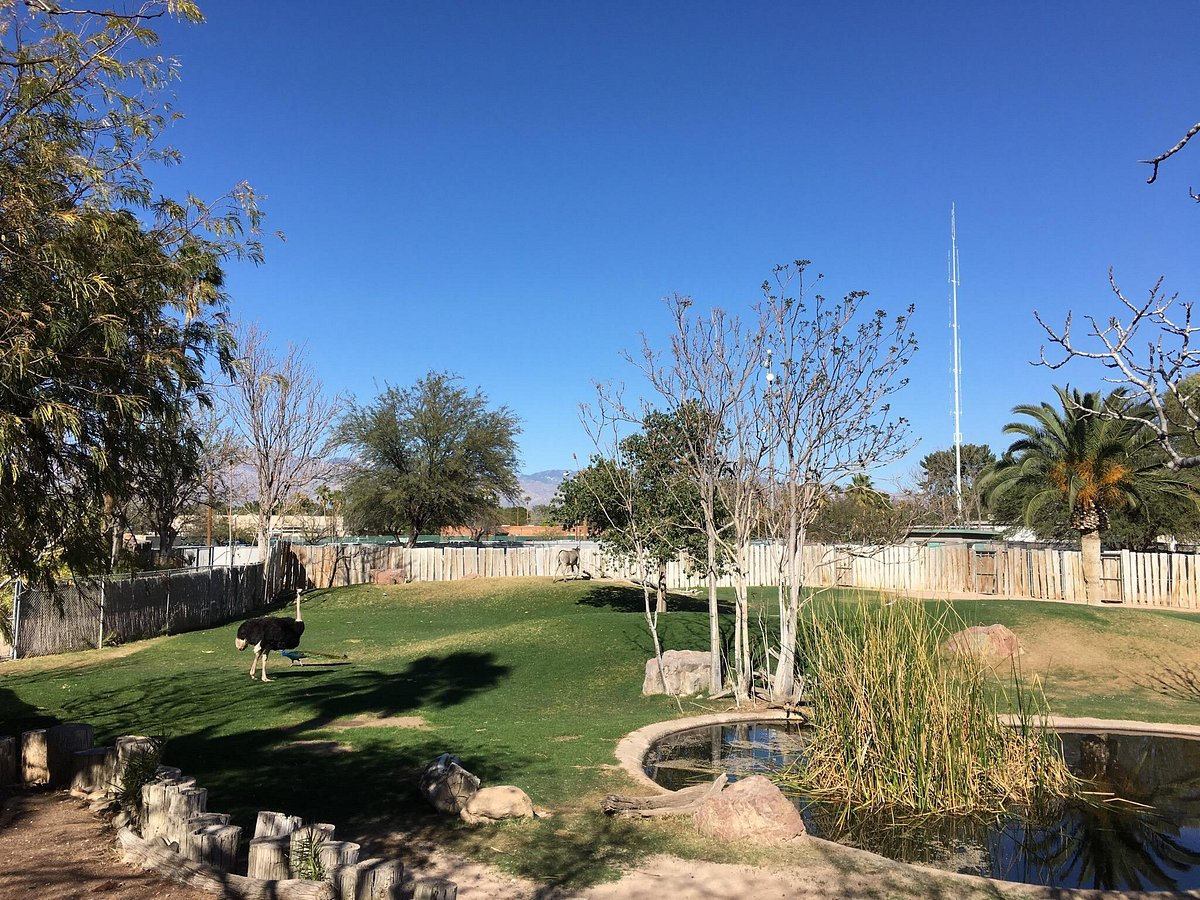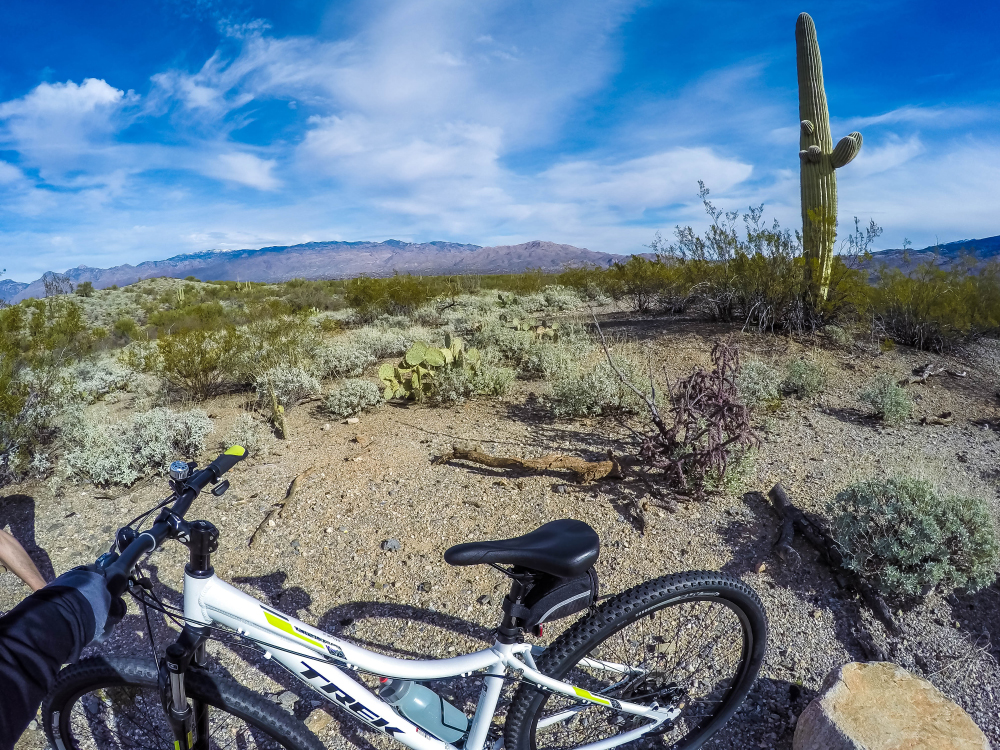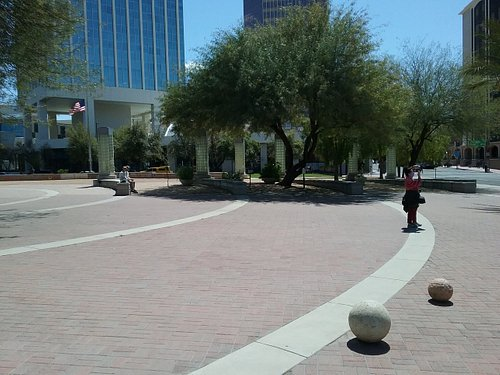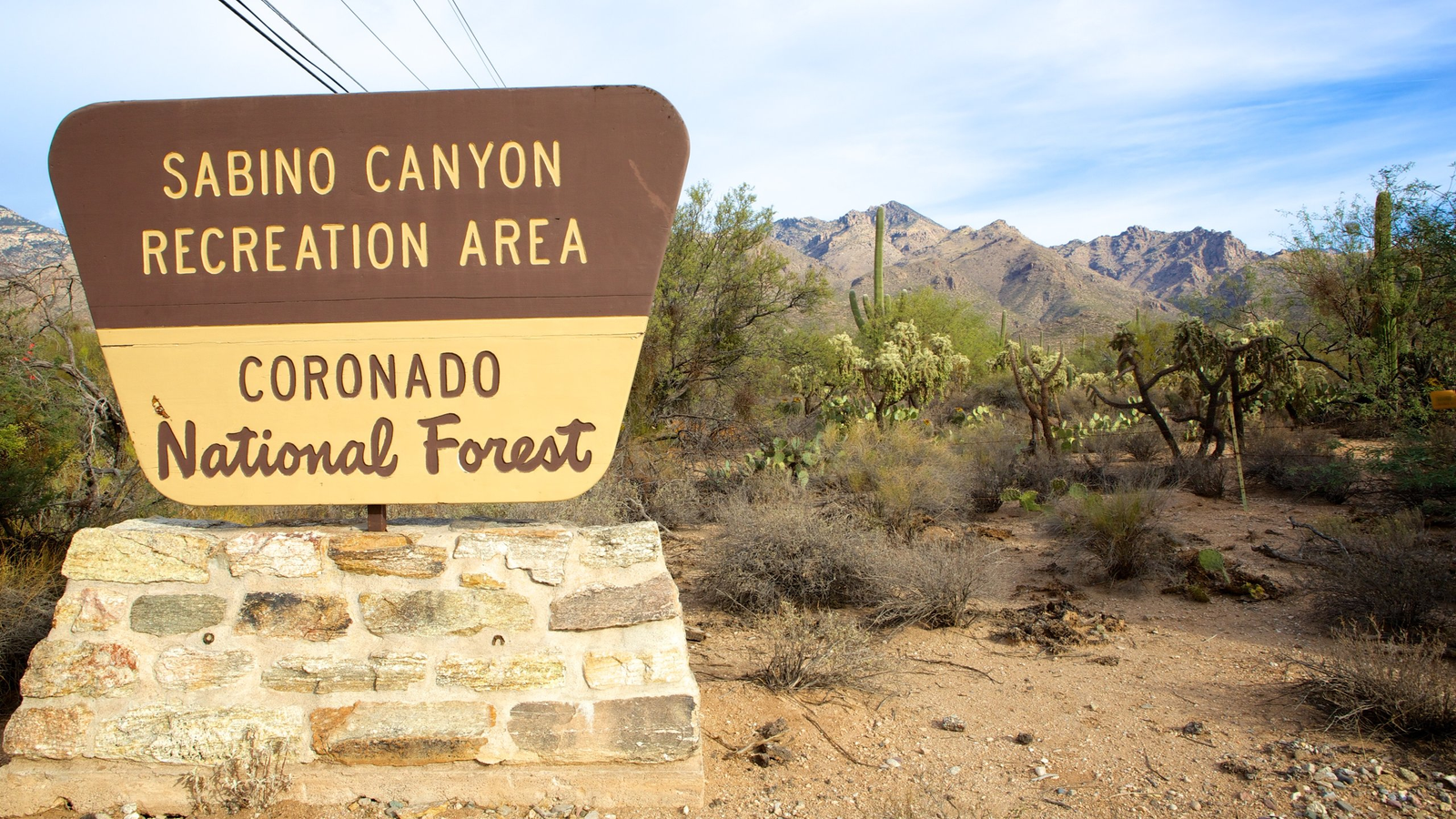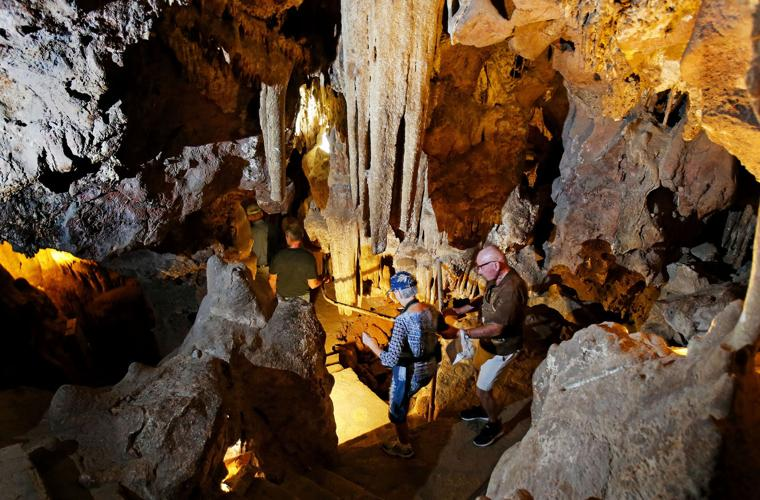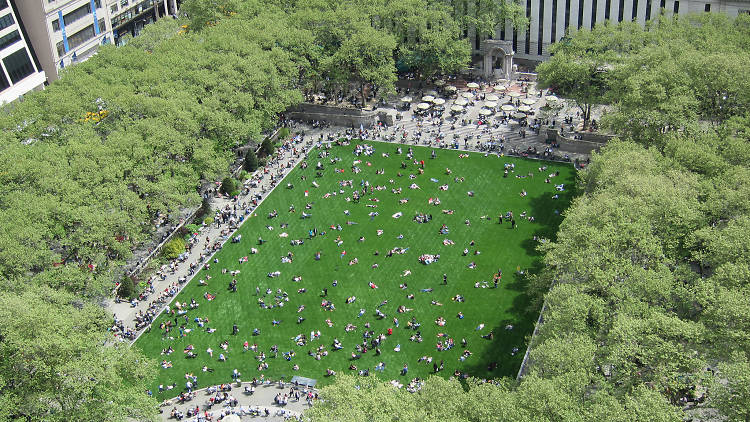Best 12 Parks in Tucson
With its breathtaking mountain views and towering saguaro cacti, Tucson is a city full with amazing parks that are ideal for taking in the expansive desert landscape. The city’s extensive parks system offers an outdoor haven for all interests, from expansive recreation areas with amphitheaters and aquatic centers to riparian habitats nestled into steep valleys.
Well-kept gardens and tree-shaded lawns provide urban retreats from the busy streets, while iconic locations allow you to get up close and personal with the Sonoran Desert’s diverse ecosystems and fauna. When combined, Tucson’s well-known parks provide tourists countless chances to create lifelong memories while surrounded by the area’s unique natural beauty and authentic Southwestern charm.
Keep reading for the 12 can’t-miss parks to add to your Tucson itinerary for scenic splendor, family fun, and plenty of wide open spaces under sunny skies.
Best 12 Parks in Tucson (2025)
See Panthers & Bears at Tucson Mountain Park
Name and Location: Tucson Mountain Park, located west of Tucson, encompasses rugged terrain and diverse wildlife habitats.
History and Significance: Established to preserve natural resources, the park is a significant conservation area and provides educational opportunities about desert ecosystems.
What to Expect: Hiking, mountain biking trails, and the chance to observe native wildlife, including javelinas, mountain lions, and black bears, in their natural environment.
Visitor Information: No entrance fees. The park is open year-round, with specific guidelines to protect both visitors and wildlife.
This vast natural park area, which spans more than 20,000 acres of saguaro forests that encircle the Tucson Mountains, offers both excellent hiking options and opportunity for up-close wildlife encounters at the Arizona Sonora Desert Museum, one of Tucson’s most well-liked tourist destinations. Hikers can choose from easy wildflower nature walks to strenuous mountain excursions that ascend over 4,500 feet and offer significant scenic rewards on the 240 miles of approved trails that extend outside the zoo.
Mountain cyclists may also put their abilities to the test on more than fifty miles of single-track routes that are packed with thrilling downhills and tricky obstacles. Whatever your favored method of taking in Tucson Mountain Park’s picturesque views, its pristine desert ecosystems make seeing a coyote or taking in a saguaro sunset very unforgettable.
Find Family Fun at Thomas Jay Regional Park
Name and Location: Thomas Jay Regional Park is a family-friendly destination located in the outskirts of Tucson, offering a wide range of outdoor activities.
History and Significance: The park is designed to provide recreational opportunities for all ages, enhancing the community’s access to green spaces and sports facilities.
What to Expect: Amenities include playgrounds, sports courts, walking paths, and picnic areas, making it an ideal location for family outings and sports events.
Visitor Information: Open daily, with free admission. Some facilities may require reservations or rental fees.
Thomas Jay Regional Park is the largest water playground in southern Arizona, making it the ideal place for aquatic play as Tucson temperatures rise. Between three vibrant splash pads, children can shoot water cannons at unwary pals, splash down curly slides, or get deliciously soaked by enormous tipping buckets. Families may enjoy shaded ramadas, barbecue grills, and a playground with a treehouse motif away from the wet fun.
Free special activities are held all year long to bring seasonal cheer across the park, including outdoor movies, fall pumpkin patches, and holiday light displays. The family-friendly facilities at TJ Regional Park, which spans more than 200 acres southeast of Tucson off the I-10, provide the perfect setting for combining summertime grins with scrolling desert vistas.
See Stunning Succulents at Tucson Botanical Gardens
Name and Location: Tucson Botanical Gardens is located in central Tucson, showcasing an extensive collection of desert plants and succulents.
History and Significance: The gardens serve as a center for education, conservation, and research, highlighting the beauty and diversity of desert flora.
What to Expect: Themed gardens, including a butterfly greenhouse and a Zen garden, offer visitors a tranquil and educational experience among the plants.
Visitor Information: An admission fee is charged. The gardens are open year-round, with special events and programs offered regularly.
The Tucson Botanical Gardens, which span five verdant acres in the heart of Tucson, offer a picturesque urban retreat into imaginative settings teeming with desert vegetation. Thematic gardens offer visitors a close-up look at Butterfly Magic habitats, international cacti collections, interactive children’s gardening displays, and peaceful Japanese areas scattered around koi ponds with sculptures inspired by Asia. While the Barrio Garden showcases indigenous water harvesting that has supported agriculture for generations, the Garden of Ancients features exotic plants that evoke prehistoric times.
Free self-guided tours are offered every day of the week, and a wealth of floral biodiversity flourishes everywhere you look, regardless of where the winding gravel trails take you. Beautiful glimpses of the flora that make up the Sonoran Desert’s dynamic ecosystems can be seen as you stroll past aromatic herbs, blooms of wildflowers, and even medicinal plants utilized in Mexican traditional medicine at the Tucson Botanical Gardens.
Have a Picnic at Gene C. Reid Regional Park
Name and Location: Gene C. Reid Regional Park, centrally located in Tucson, is a large urban park offering a variety of recreational amenities.
History and Significance: The park has been a central part of Tucson’s park system for years, providing a green space for relaxation, sports, and community events.
What to Expect: The park features expansive grassy areas, picnic spots, playgrounds, and access to the Reid Park Zoo.
Visitor Information: Open to the public daily, with no admission fee for general park areas. Specific attractions within the park may have their own hours and fees.
Gene C. Reid Regional Park, which borders the Cañada del Oro River basin and offers breathtaking mountain views as a backdrop, offers plenty of space for families to sprawl out on lush lawns that are shaded by tall cottonwoods and willow trees. When Tucson temperatures rise, kids may cool off with water splash pads after exploring the park’s fanciful Alice in Wonderland and Wizard of Oz themed playgrounds.
Gene Reid Park, which is dotted with shaded ramadas and barbecue grills, is a great place for relaxed picnics while taking in the gorgeous vistas of the golden-hued Santa Catalina peaks that rise sharply along the horizon. Over 100 acres of beautiful parkside open spaces are perfect for relaxing, and leashed dogs can join in the fun by interacting with their owners in designated off-leash areas.
Test Mountain Biking Skills at The Shootout Loop at Fantasy Island at Saguaro National Park
Name and Location: The Shootout Loop is a mountain biking trail located in the Fantasy Island area of Saguaro National Park, on the east side of Tucson.
History and Significance: This trail is part of a network designed for mountain biking enthusiasts, offering a challenging and enjoyable experience amidst the park’s natural beauty.
What to Expect: Bikers can expect a variety of terrain, including technical sections and fast descents, suitable for intermediate to advanced riders.
Visitor Information: The trail is open year-round, with no fees specifically for biking. Riders should be prepared with water, helmets, and appropriate gear.
Although Saguaro National Park is more famous for its famous huge cacti that adorn its bleak desert vistas, its eastern region is also a popular destination for bikers due to its highly regarded mountain biking, which is both picturesque and difficult. This 12-mile single-track course, called The Shootout Loop, is reachable from the Signal Hill picnic area. It climbs more than 1,000 feet as it winds through a rocky maze that tests your ability to handle sharp curves, sudden drops, and a number of challenging ups and downs that will make your heart race.
However, strenuous paths yield substantial rewards because of the ever-changing views of Saguaro’s sun-drenched cacti forests that stretch for miles. Saguaro National Park offers challenging routes that are ready to be conquered amid classic desert playgrounds for thrilling backcountry cycling trips that are flawlessly coupled with breathtaking scenery.
Enjoy Urban GREEN Spaces at Jacome Plaza
Name and Location: Jacome Plaza is an urban green space located in downtown Tucson, offering a peaceful retreat amidst the city’s hustle and bustle.
History and Significance: The plaza is a central part of downtown Tucson, providing a space for community events, art installations, and leisure activities.
What to Expect: Visitors can enjoy outdoor seating, public art, and occasional events and markets hosted in the plaza.
Visitor Information: Jacome Plaza is accessible to the public daily, with no admission fee. It’s a great spot for a lunch break or a casual meeting.
Jacome Plaza, which spans a whole city block in downtown Tucson, offers a welcoming public area where people may take in well-reviewed performances, local talent exhibitions at art fairs, or just unwind in the middle of the city surrounded by lush lawns and water features. The plaza is dotted with tall palm trees that shade benches and geometric concrete planters that are bursting with vibrant floral arrangements. On some evenings, vintage films that are projected onto the exteriors of nearby buildings invite people to find a piece of grass and watch old films beneath Tucson’s sparkling night sky.
From kids joyfully playing inside a gigantic spiderweb to a stack of VW Beetles perilously climbing toward the sky marking the plaza’s edge, dramatic steel sculptures provide artistic fascination throughout. Jacome Plaza provides welcoming open spaces that are likely to delight, providing a convenient getaway into striking public art and plenty of urban green spaces ideal for visitors to observe against the bustling backdrop of modern downtown.
Explore Sabino Canyon in Coronado National Forest
Name and Location: Sabino Canyon is a natural paradise located within the Coronado National Forest, just north of Tucson, Arizona.
History and Significance: This area has been a beloved spot for both locals and tourists for generations, offering a glimpse into the diverse ecosystems of the Sonoran Desert. Its history includes use by indigenous peoples, Spanish explorers, and American settlers.
What to Expect: Visitors can enjoy scenic tram rides, hiking trails of varying difficulty, and the beauty of the Sonoran Desert, including waterfalls and wildlife.
Visitor Information: The canyon is accessible year-round, with parking and visitor facilities available. Fees may apply for parking and tram rides.
Minutes from downtown, Sabino Canyon has approximately 60,000 acres of wild natural beauty, making it the most impressive park in Tucson. The Santa Catalina Mountains provide a fantastic backdrop for hiking and cycling activities, which are characterized by cactus-dotted routes and stream-fed canyon sanctuaries. Or take a more relaxed ride on the Sabino Canyon Tram, which offers a 45-minute round-trip tour while providing educational narration as you rumble over the untamed terrain.
With almost 10 miles of trails for all skill levels, from easy creekside nature walks ideal for spotting wildlife to rocky ridgelines offering views over Tucson and beyond, Sabino Canyon provides classic glimpses into the Sonoran Desert’s breathtaking landscapes and diversity, regardless of how you choose to explore it.
See the Sights Along The Loop Trail at Saguaro National Park
Name and Location: The Loop Trail is a popular path in Saguaro National Park, located on the outskirts of Tucson, Arizona.
History and Significance: Saguaro National Park protects some of the most impressive stands of Saguaro cacti, a symbol of the American West and significant to the cultural heritage of the region.
What to Expect: The Loop Trail offers easy to moderate walks amidst towering saguaro cacti, with opportunities to see desert wildlife and stunning landscapes.
Visitor Information: Park entry fees apply. The park is open year-round, but visitors should be prepared for extreme heat during summer months.
Saguaro National Park and its famous namesake residents, who are scattered over the untamed environment, are the epitome of Tucson scenery. The park, which spans more than 90,000 acres and is actually separated into two districts that border the municipal boundaries of Tucson, is home to magnificent saguaro woods that have been conserved for protection. With pullouts strategically placed to gaze and take pictures of the iconic big cactus, the paved, pet-friendly Cactus Forest Loop Drive in Saguaro’s western Rincon Mountain District provides easy animal watching.
The one-way beautiful route covers slightly over 8 miles of the Sonoran Desert’s typical ecosystem, which is teeming with close-up floral life. Watch for soaring red-tailed hawks or jackrabbits dashing through spiky ocotillo woodlands along the cactus-framed horizons across this well-liked national park that encircles Tucson on all sides.
Wander Through Reid Park & Randolph Municipal Golf Course
Name and Location: Reid Park and Randolph Municipal Golf Course are situated in central Tucson, offering a large urban park and public golf course.
History and Significance: The park and golf course have provided recreational space for the community and visitors since the mid-20th century, contributing to Tucson’s quality of life.
What to Expect: Visitors can enjoy the zoo, rose garden, picnic areas, walking paths, and golf at one of the oldest courses in the city.
Visitor Information: Open daily, with specific hours for different facilities. Golf course fees apply, and park areas are generally free to the public.
Reid Park, which spans more than 100 acres and is conveniently located near downtown, features expansive green areas with playgrounds, picnic-friendly duck pond walks, and sports facilities for all ages of recreation enthusiasts. Pick-up games and league play are welcome on the baseball diamonds, volleyball courts, and tennis centers, while the park’s famous centerpiece, “The Jon L. Tombs Rose Garden,” dazzles guests with its more than 4,000 rose bushes blooming in the spring.
A beautiful backdrop for honing your short game is provided by the Randolph Municipal Golf Course, which lies adjacent. It features well-kept greens that jut out across fairways lined with palm trees with the Tanque Verde Mountains in the distance. Reid Park and Randolph Golf Course provide locals and tourists with beautiful locations in the heart of Tucson where they may stay active in the sunshine.
See also Top 12 Parks in Santa Ana
Marvel at Natural Wonders at Catalina State Park
Name and Location: Catalina State Park is located at the base of the Santa Catalina Mountains, just north of Tucson.
History and Significance: This park is known for its diverse ecosystems, archaeological significance, and as a haven for outdoor enthusiasts.
What to Expect: Hiking trails, bird watching, camping sites, and the chance to see ancient Hohokam ruins are just some of the attractions.
Visitor Information: Entry fees are charged. The park is open year-round, offering facilities such as picnic areas and restrooms.
Near Tucson, Catalina State Park protects more than 5,500 acres of pure Sonoran Desert wilderness dotted with saguaros, set against the majestic Santa Catalina mountain ranges. The park offers excellent animal viewing chances along its picturesque hiking and bike paths, which are suitable for all skill levels. Look along pathways for families of quail scuttling among cacti or rock squirrels scampering nearby. You have a better chance of seeing mule deer munching scrub brush, lone coyotes patrolling surrounding washes, or possibly a bobcat if fortune favors you in the early morning and twilight hours.
In addition to housing typical desert residents, the park conserves relics from Arizona’s mining past, such as the ancient Romero Ruin stone house. The park offers peak activities just minutes from the city lights, where saguaro woods that have thrived since prehistoric times demand exploration. Campsites and cabins are accessible for overnight retreats that further immerse visitors in Catalina’s natural splendor.
Find Hidden Caves & Mine Ruins at Colossal Cave Mountain Park
Name and Location: Colossal Cave Mountain Park is located southeast of Tucson, featuring a vast cave system and historic mine ruins.
History and Significance: The park’s caves have been explored for centuries, with evidence of use by prehistoric peoples and later by miners in the 19th century.
What to Expect: Guided tours of the caves, hiking trails, and the opportunity to learn about the region’s geology and history.
Visitor Information: Tours are available for a fee. The park also offers picnic areas and camping sites.
With its enormous limestone caves that have been left behind after over 2,000 years of erosion, Colossal Cave Mountain Park, which is only 20 minutes from downtown, transports visitors back to the 1880s. The intricate network of caves winds deep underground, past flow stones, stalagmites, and even narrow passageways between rocky passages that make your heart race. Select from three specialty tours that cover anything from fundamental geology to graphic stories about the cave’s infamous history as a haven for outlaws and train thieves seeking refuge after stagecoach heists.
Above ground, visitors can rent horses and explore the remains of abandoned mines that previously supplied the region with lead, silver, and zinc ores needed to make bullets. Colossal Cave Mountain Park provides spelunking families with underground thrills and old west heritage, as well as campgrounds for overnight stays under the stars.
Relax at Kennedy Park in Midtown
Name and Location: Kennedy Park is a spacious public park located in midtown Tucson, offering a variety of recreational facilities.
History and Significance: Serving the community for many years, Kennedy Park provides a green oasis in the urban landscape, promoting outdoor activities and gatherings.
What to Expect: The park features a lake, picnic areas, sports facilities, and ample space for walking and relaxation.
Visitor Information: Open daily, free to the public. Facilities such as ramadas may be available for reservation.
Set just west
Kennedy Park, located in the hip Midtown District of downtown, offers a quaint local haven with duck ponds, rose gardens, and expansive lawns covered by tall trees. Children may burn off energy in the playground, which is located beneath a fanciful ramadas structure ornately carved with Southwestern designs, while a sheet fountain at the center of the park provides respite from Tucson’s scorching desert heat.
Visit the well-known farmers market on Saturdays, which features mouthwatering Sonoran food truck options, artisan crafts, and fresh fruit. In addition, scheduled activities like yoga classes and live music performances promote finding a spot on Kennedy Park’s expansive lawns, which are ideal for relaxing in the shade during the long Tucson summers.
Concluding remarks
Discovering Tucson via picturesque paths, kid-friendly swimming pools, and expansive green areas ideal for lounging on long sunny days offers tourists numerous opportunities to engage with the area’s remarkable desert character and outdoor identity that are exclusive to southern Arizona’s varied landscapes. Above all, Tucson’s cherished parks system provides a wealth of chances for everyone to enjoy the city’s almost ideal environment through recreation that is available in a variety of settings as vibrant and varied as the neighborhood itself.
From riding difficult mountain circuits that offer breathtaking beauty to hiking through national park cacti forests, Old Pueblo days were full with discovering the Sonoran Desert’s diverse ecosystems at every turn. Tucson’s picturesque parks offer natural areas that are sure to inspire, whether you’re hoping to discover expansive vistas from high ridgelines or just locate a shaded spot to spread out a picnic blanket and watch the clouds pass.
